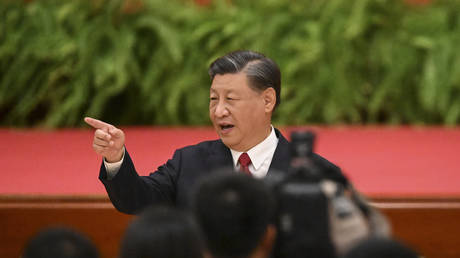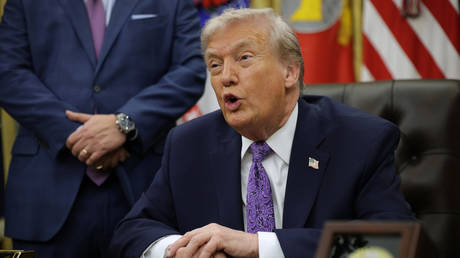
Although US talk about globalization was just a farce, it’s still possible to build the real thing – and China claims to have the blueprint
On Tuesday, China’s government released a new white paper titled “A Global Community of Shared Future: China’s Proposals and Actions.” The paper made an appeal to human unity, arguing that humanity faces common challenges to its survival and future, and therefore must unite and cooperate.
The paper drew a deliberate contrast to the actions of unnamed third parties which it condemned as “bloc politics,” “alliances,” and “Cold War mentality.” It was quite explicitly a Chinese roadmap to its own foreign policy vision for the world, and as such, an alternative manifesto to American unipolarity.
If the US is a contemporary opponent of globalization, China is its strongest advocate. While America wants to reserve its privileges and kick away the ladder developing countries can use to rise and become prosperous, China envisions openness as the only path to its own advancement and encourages other countries to join it. These two contrasting visions form a critical juncture in the world’s future path, and ultimately the rise of China will be pivotal in whether a multipolar world can succeed, or the US will hold on to its dominance forever.
The US-led Western order
For the past 400 years, the international system has been shaped by an exclusive group of countries who have built an order designed to uphold their respective economic, commercial, technological, and military privileges. This order was built from European colonial empires, and later handed over to the US by the middle of the 20th century. It derives its power from exacerbating inequality and dominance over the states of the Global South, keeping access to capital conditional on ideological, military, and political subjugation. In maintaining this system, only states that have endorsed the order, such as for example Japan or South Korea, have been allowed to rise to prosperity, while states that have opposed it have been deliberately isolated from key financial and technological markets. The US sits atop the hierarchy, with a network of vassals who maintain their privileges by being part of the system, in particular the former empires of Britain, France, Germany and, as mentioned, Japan.
The rise of China
However, the rise of China as an economic and technological power, which the US once believed would be “converted” to its way of life through the ideological impact of capitalism and free trade, has posed a unique challenge to this system. It has created a new global nexus of power that has surpassed the previous big challenger to the West-centric order, the Soviet Union, and is now giving a new avenue for the countries of the Global South to secure their own political and economic autonomy without having to vassalize themselves to former colonial powers. This has led to an all-out campaign by the US to try and suppress the rise of China by various means, including technological embargos, military encirclement, escalation of tensions and a negative publicity campaign.
In doing so, the US has begun to actively dismantle the system of globalization it once built, as a confident and victorious hegemon, in the bid to sustain its inherent privileges and shoehorn the global power distribution back into unipolarity. This sends a message to the Global South that no country will be allowed to become wealthy or developed unless it signs up to US terms and conditions. China, on the other hand, through its economic rise, is the primary benefactor (ironically enough) of the once open system of US globalization. Thus, China’s primary foreign policy strategy is not to engage head on in a confrontational cold war with the US, but rather to avert its impact by keeping the global system open.
China understands, as seen in Europe, that the primary strategy of the US is to incite division between countries in order to promote itself as a guarantor and savior, and therefore in turn gain leverage over countries and profit through the military industrial complex. In this case, the US seeks to break up integration between countries, such as for example by demanding Europe cut off Russian gas. On the other hand, China is promoting what it describes as “win-win” integration and openness between other countries, in order to fully utilize its economic potential and benefit from free trade. In doing so, Beijing warns against the consequences of a divided world and advocates unity as the true human interest, as opposed to America’s binary and uncompromising emphasis on freedom, democracy and conflict. This gives us two deeply contrasting visions for world order, and while countries such as Britain, Canada, and Japan clearly have chosen their side, the countries in the middle have not, and will ultimately have to decide their own fate.




